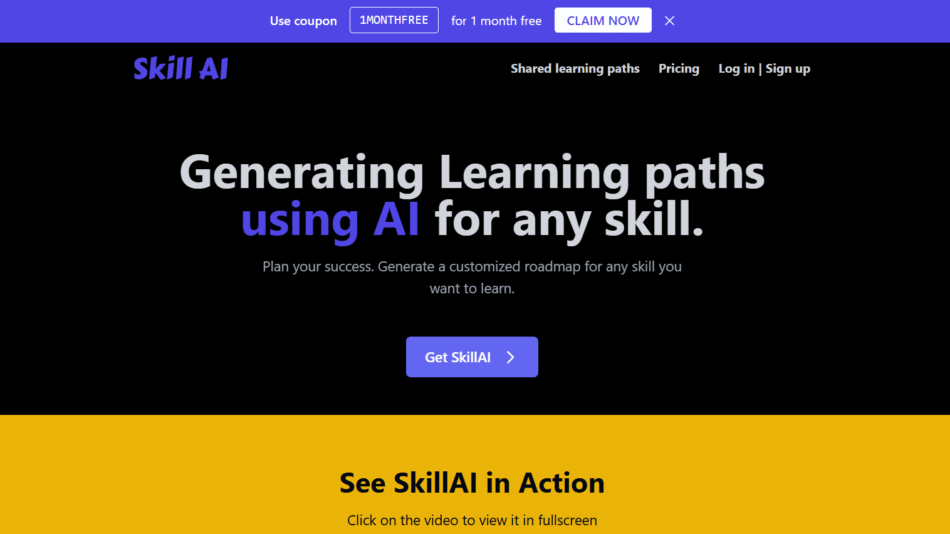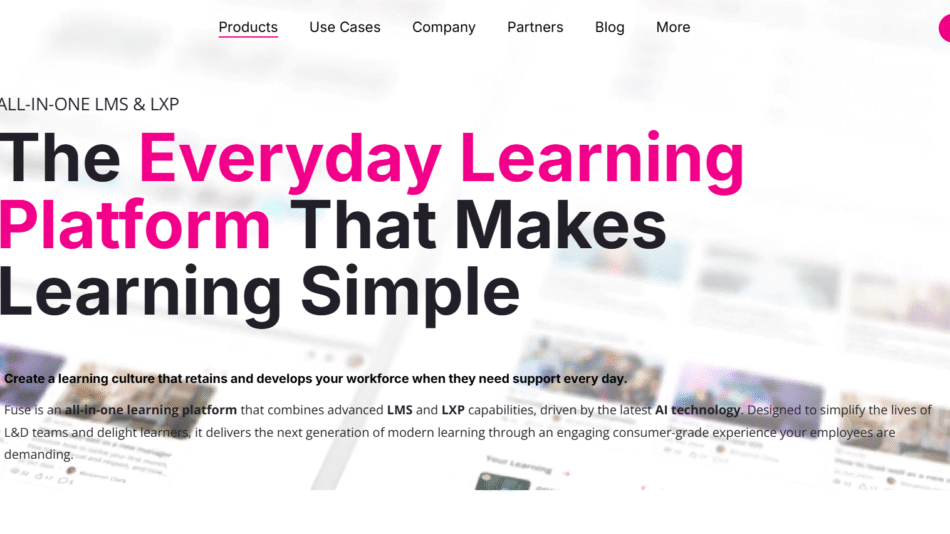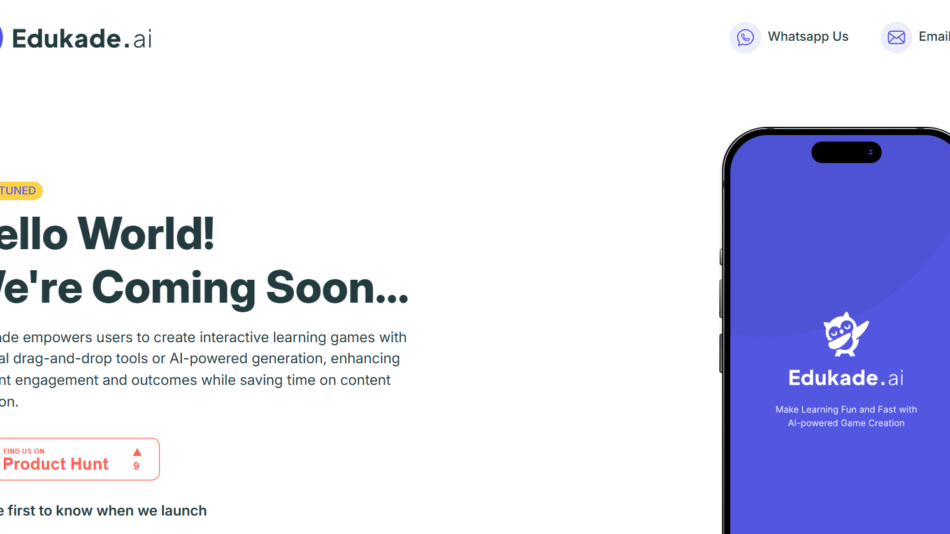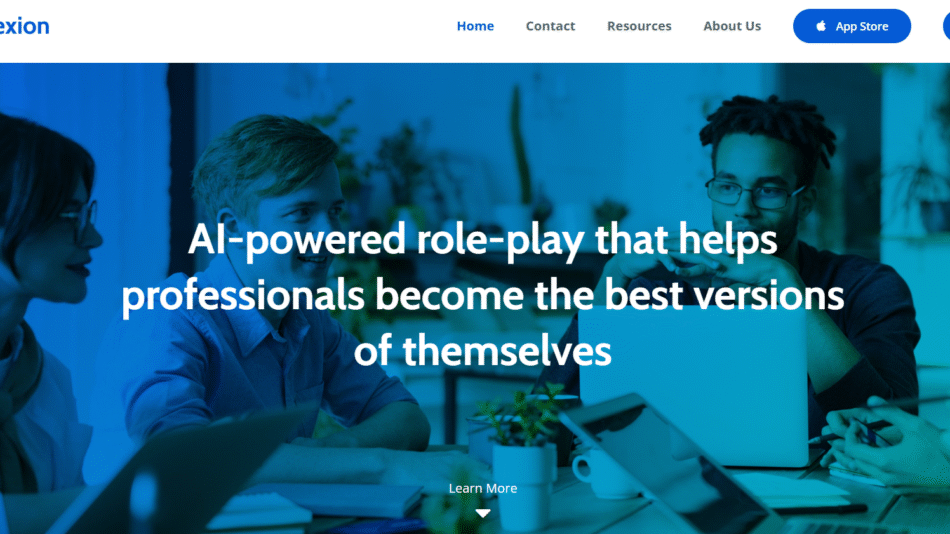Blend-ed is an AI-powered video learning platform designed specifically for K-12 schools and educators. It allows schools to deliver high-quality, teacher-led video lessons that support blended and hybrid learning environments. With a focus on scalability and educational impact, Blend-ed aims to modernize how instruction is delivered, enabling students to learn anytime, anywhere, while ensuring schools maintain control over content, curriculum, and pedagogy.
Unlike generic learning platforms, Blend-ed is purpose-built for formal education, giving schools the tools to create, manage, and deliver structured video lessons aligned with their existing academic standards. It combines professional-grade lesson delivery with flexible learning paths and personalized support features, making it a powerful tool for both classroom and remote education.
Features
Blend-ed provides a range of features that empower schools and educators to deliver effective and engaging video-based learning.
Teacher-Led Video Lessons: Enables educators to record and deliver curriculum-aligned lessons, preserving the teacher’s role in instruction.
Curriculum Integration: Aligns with school and district academic standards to ensure continuity in teaching and learning.
Student-Centered Interface: Offers a user-friendly portal for students to access lessons, track progress, and review materials at their own pace.
Analytics and Reporting: Gives educators access to data on student engagement, lesson completion, and learning outcomes.
Personalized Learning Paths: Allows for differentiated instruction through customized lesson sequences and pacing.
Scalable Deployment: Designed to support entire schools or districts with centralized content and administration tools.
Offline Access: Students can download lessons for offline viewing, ensuring accessibility even without internet access at home.
Interactive Elements: Supports quizzes, feedback, and engagement tools embedded within video lessons.
Secure and Compliant: Built with data privacy and educational standards in mind, including GDPR and FERPA compliance.
How It Works
Blend-ed works by enabling schools to create structured, teacher-led video courses that align with their curriculum. Educators record lessons using Blend-ed’s content creation tools or upload existing video content. Each lesson can be enhanced with quizzes, notes, and assignments to ensure interactivity and comprehension.
Students access these lessons through a secure online portal, where they can watch videos, complete assignments, and track their progress. The system captures data on student engagement and provides insights to teachers, allowing them to offer targeted support and interventions.
Blend-ed supports both synchronous and asynchronous learning, giving schools the flexibility to use it in fully online, hybrid, or in-classroom settings.
Use Cases
K-12 Schools: Deliver curriculum-aligned video lessons across subjects and grade levels, supporting blended learning initiatives.
School Districts: Standardize instruction across multiple campuses with centralized content and analytics.
Remote and Rural Education: Ensure consistent lesson delivery in areas where in-person instruction is limited or inconsistent.
Teacher Absences and Sub Plans: Use pre-recorded lessons to maintain instructional quality when teachers are unavailable.
Catch-Up and Revision: Allow students to revisit recorded lessons to reinforce learning or catch up on missed content.
Special Education: Provide differentiated lessons that accommodate different learning speeds and needs.
Home-Schooling Programs: Offer structured video-based instruction to home-school educators and learners.
Pricing
Blend-ed offers custom pricing based on the size of the institution and specific implementation needs. While specific pricing is not listed publicly on blend-ed.com, the platform is designed to support deployments at the school, district, or regional level.
Pricing typically factors in:
Number of students and educators
Required storage and content hosting
Feature access and customization
Level of technical support and training
Schools are encouraged to request a demo or consultation to receive a tailored quote based on their educational goals and infrastructure.
Strengths
Education-Focused Design: Built specifically for K-12 schools, not adapted from corporate learning tools.
Scalable Platform: Supports single schools or entire districts with ease.
Teacher-Driven: Empowers educators to remain central to the learning process through custom lesson creation.
Flexible Learning Formats: Works equally well in the classroom, remotely, or in hybrid models.
Comprehensive Analytics: Provides actionable insights for teachers and administrators.
Student-Centric: Designed with learners in mind, supporting independent pacing and offline access.
Secure and Compliant: Meets stringent education data security and privacy requirements.
Drawbacks
Requires Educator Time: Teachers may need dedicated time to create and upload lesson content.
Initial Setup and Training: Schools may require onboarding sessions to fully utilize the platform’s capabilities.
No Public Pricing: Lack of upfront pricing may make initial budgeting and comparison more difficult.
Limited Use Outside Education: Tailored for formal education settings, not general corporate or adult learning.
Dependent on Digital Infrastructure: Requires access to devices and internet connectivity for optimal use, though offline options help mitigate this.
Comparison with Other Tools
Compared to Google Classroom:
Google Classroom provides general LMS tools but lacks video creation and structured curriculum delivery. Blend-ed focuses on video-first, teacher-led instruction.
Compared to Khan Academy:
Khan Academy offers pre-made content. Blend-ed enables schools to create and deliver their own, aligned with local curriculum.
Compared to Edpuzzle:
Edpuzzle allows interactive videos, but Blend-ed offers full lesson pathways, scheduling, offline access, and district-wide scalability.
Compared to Zoom or Teams for Education:
These platforms focus on live interaction. Blend-ed provides structured, asynchronous video learning with deeper curriculum integration.
Compared to Seesaw:
Seesaw is better suited for early grades and portfolios. Blend-ed supports scalable video lesson delivery across all K-12 levels.
Customer Reviews and Testimonials
As a growing platform, Blend-ed is already being used by schools to enhance remote and blended learning strategies. Initial feedback from educators has been positive.
A school principal commented:
“Blend-ed gave our teachers the tools to create meaningful lessons during school closures, and we continue to use it to support flexible learning.”
A high school teacher shared:
“Recording lessons with Blend-ed allowed me to maintain consistency across multiple classes and saved time in the long run.”
An instructional coach noted:
“The platform helps us track student engagement and tailor support in ways we couldn’t before. It’s become an essential part of our digital strategy.”
These testimonials reflect Blend-ed’s impact on improving instructional continuity and learning access.
Conclusion
Blend-ed is a purpose-built video learning platform designed to support schools in delivering effective, scalable, and teacher-led education in a digital format. Its AI-enhanced features, student-focused design, and curriculum alignment capabilities make it a strong choice for institutions embracing blended or hybrid learning.
Whether used to bridge gaps in instruction, standardize learning across campuses, or provide flexible education to remote learners, Blend-ed offers schools a powerful and adaptable solution for modern teaching. For educators and administrators seeking to integrate structured video content without sacrificing quality or control, Blend-ed delivers a complete platform built for the realities of today’s education landscape.















